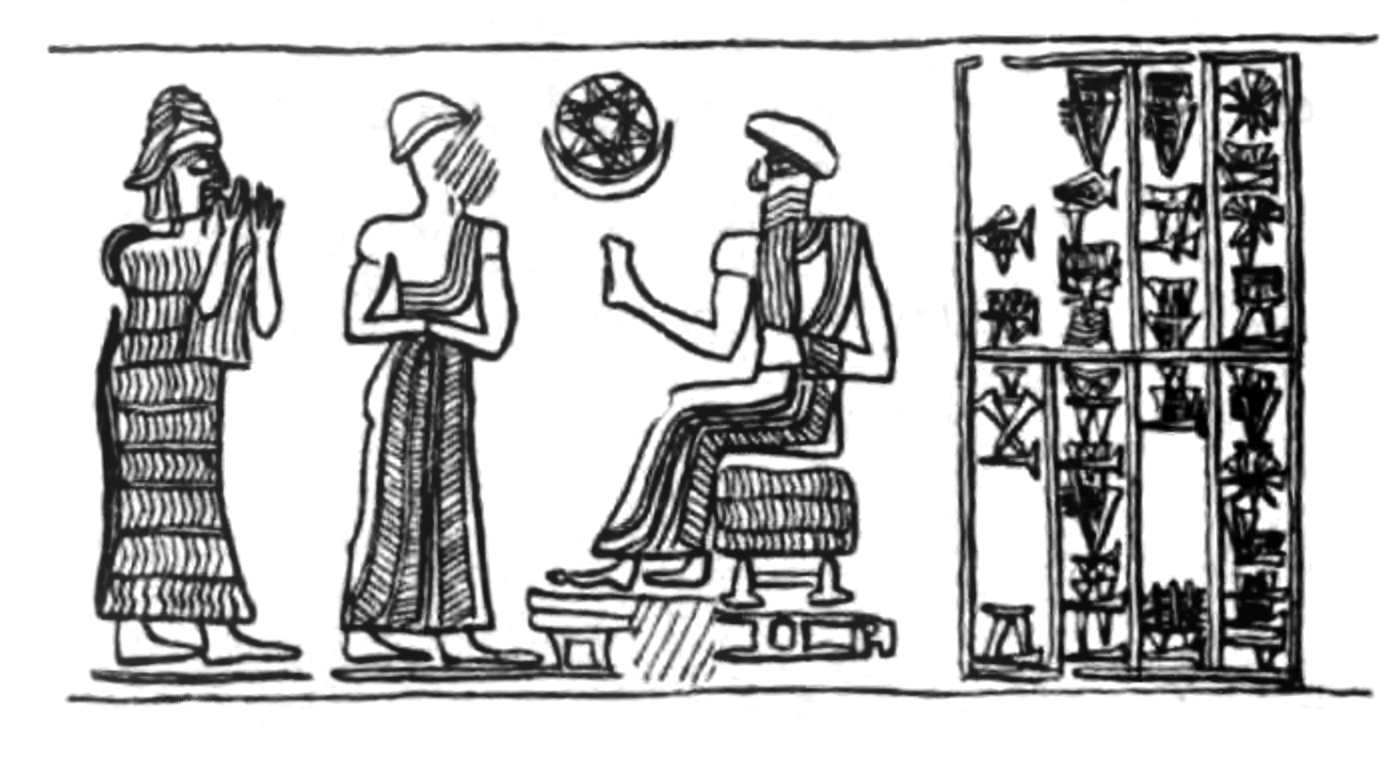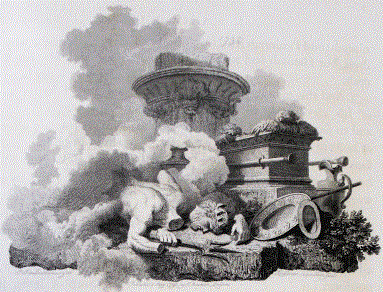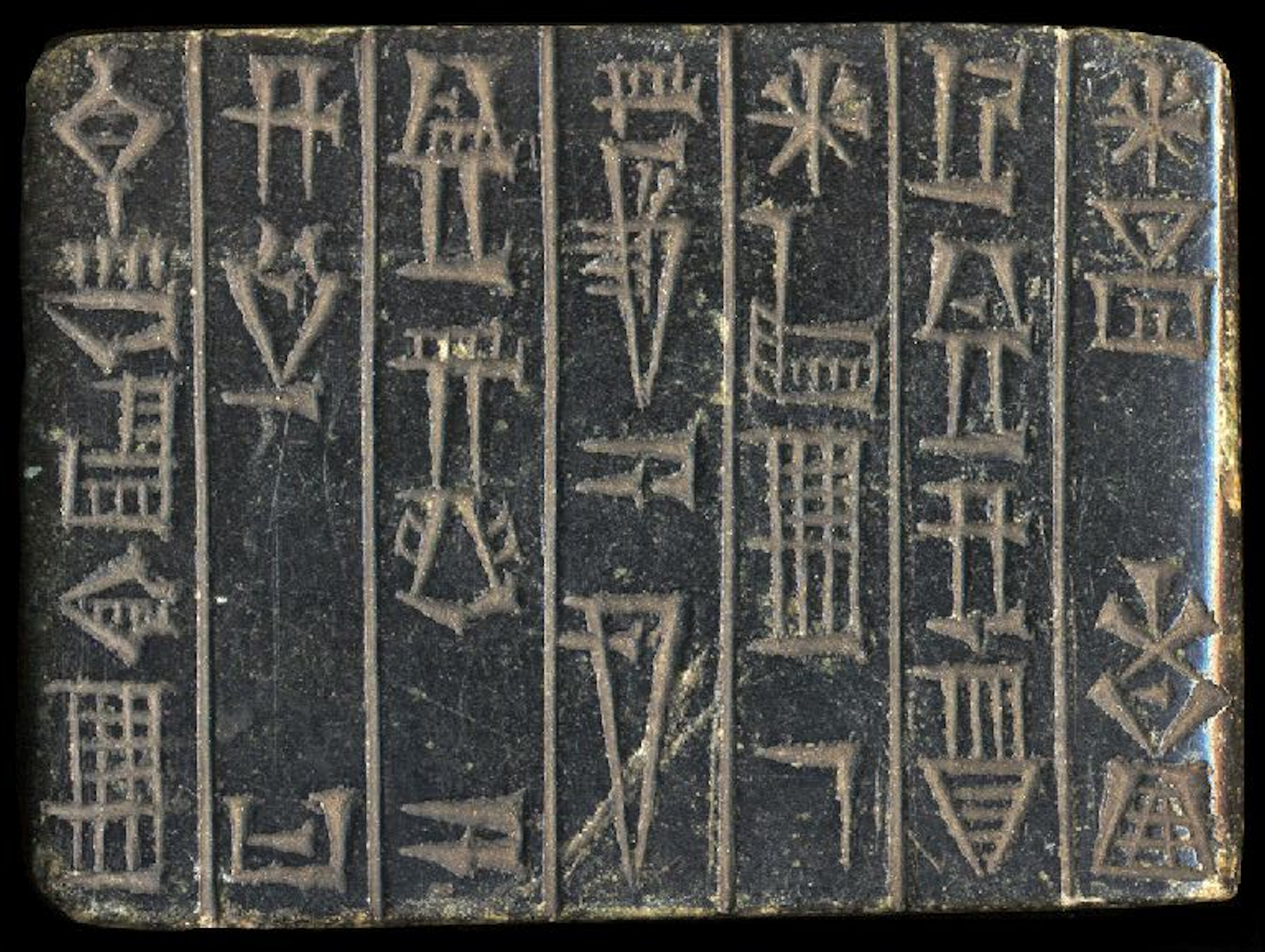|
Enlil
Enlil, , "Lord f theWind" later known as Elil, is an ancient Mesopotamian god associated with wind, air, earth, and storms. He is first attested as the chief deity of the Sumerian pantheon, but he was later worshipped by the Akkadians, Babylonians, Assyrians, and Hurrians. Enlil's primary center of worship was the Ekur temple in the city of Nippur, which was believed to have been built by Enlil himself and was regarded as the "mooring-rope" of heaven and earth. He is also sometimes referred to in Sumerian texts as Nunamnir. According to one Sumerian hymn, Enlil himself was so holy that not even the other gods could look upon him. Enlil rose to prominence during the twenty-fourth century BC with the rise of Nippur. His cult fell into decline after Nippur was sacked by the Elamites in 1230 BC and he was eventually supplanted as the chief god of the Mesopotamian pantheon by the Babylonian national god Marduk. Enlil plays a vital role in the Sumerian creation myth; he separ ... [...More Info...] [...Related Items...] OR: [Wikipedia] [Google] [Baidu] |
List Of Mesopotamian Deities
Deities in ancient Mesopotamia were almost exclusively anthropomorphic. They were thought to possess extraordinary powers and were often envisioned as being of tremendous physical size. The deities typically wore ''melam'', an ambiguous substance which "covered them in terrifying splendor" and which could also be worn by heroes, kings, giants, and even demons. The effect that seeing a deity's ''melam'' has on a human is described as ''ni'', a word for the " physical creeping of the flesh". Both the Sumerian and Akkadian languages contain many words to express the sensation of ''ni'', including the word ''puluhtu'', meaning "fear". Deities were almost always depicted wearing horned caps, consisting of up to seven superimposed pairs of ox-horns. They were also sometimes depicted wearing clothes with elaborate decorative gold and silver ornaments sewn into them. The ancient Mesopotamians believed that their deities lived in Heaven, but that a god's statue was a physical embodiment ... [...More Info...] [...Related Items...] OR: [Wikipedia] [Google] [Baidu] |
Ninlil
Ninlil ( D NIN.LÍL; meaning uncertain) was a Mesopotamian goddess regarded as the wife of Enlil. She shared many of his functions, especially the responsibility for declaring destinies, and like him was regarded as a senior deity and head of the pantheon. She is also well attested as the mother of his children, such as the underworld god Nergal, the moon god Nanna or the warrior god Ninurta. She was chiefly worshiped in Nippur and nearby Tummal alongside Enlil, and multiple temples and shrines dedicated to her are attested from these cities. In the first millennium BCE she was also introduced to Ḫursaĝkalamma near Kish, where she was worshiped alongside the goddess Bizilla, who was likely her sukkal (attendant deity). At an early date Ninlil was identified with the goddess Sud from Shuruppak, like her associated with Enlil, and eventually fully absorbed her. In the myth ''Enlil and Sud'', Ninlil is the name Sud received after marrying Enlil. Nisaba, the goddess of writi ... [...More Info...] [...Related Items...] OR: [Wikipedia] [Google] [Baidu] |
Nippur
Nippur (Sumerian: ''Nibru'', often logographically recorded as , EN.LÍLKI, "Enlil City;"The Cambridge Ancient History: Prolegomena & Prehistory': Vol. 1, Part 1. Accessed 15 Dec 2010. Akkadian: ''Nibbur'') was an ancient Sumerian city. It was the special seat of the worship of the Sumerian god Enlil, the "Lord Wind", ruler of the cosmos, subject to An (mythology), An alone. Nippur was located in modern Nuffar in Afak District, Afak, Al-Qādisiyyah Governorate, Iraq (roughly 200 km south of Baghdad). Occupation at the site extended back to the Uruk period, the Ubaid period, and the Jemdet Nasr period. History Nippur never enjoyed political hegemony in its own right, but its control was crucial, as it was considered capable of conferring the overall "kingship" on monarchs from other city-states. It was distinctively a sacred city, important from the possession of the famous Ekur temple of Enlil. Ninurta also had his main Cult (religious practice), cult center, the E (temple), E ... [...More Info...] [...Related Items...] OR: [Wikipedia] [Google] [Baidu] |
Dagan (god)
Dagon ( he, דָּגוֹן, ''Dāgōn'') or Dagan ( sux, 2= dda-gan, ; phn, 𐤃𐤂𐤍, Dāgān) was a god worshipped in ancient Syria across the middle of the Euphrates, with primary temples located in Tuttul and Terqa, though many attestations of his cult come from cities such as Mari and Emar as well. In settlements situated in the upper Euphrates area he was regarded as the "father of gods" similar to Mesopotamian Enlil or Hurrian Kumarbi, as well as a lord of the land, a god of prosperity, and a source of royal legitimacy. A large number of theophoric names, both masculine and feminine, attests that he was a popular deity. He was also worshiped further east, in Mesopotamia, where many rulers regarded him as the god capable of granting them kingship over the western areas. Attestations of Dagan from coastal areas are much less frequent and come mostly from the northern city of Ugarit, where Dagan's cult had a limited scope. According to the Hebrew Bible, Dagan was al ... [...More Info...] [...Related Items...] OR: [Wikipedia] [Google] [Baidu] |
Ninurta
, image= Cropped Image of Carving Showing the Mesopotamian God Ninurta.png , caption= Assyrian stone relief from the temple of Ninurta at Kalhu, showing the god with his thunderbolts pursuing Anzû, who has stolen the Tablet of Destinies from Enlil's sanctuary ( Austen Henry Layard ''Monuments of Nineveh'', 2nd Series, 1853) , parents= Enlil and Ninhursag As Urash, An , deity_of=God of agriculture, hunting, and war , abode=Eshumesha temple in NippurLater Kalhu, during Assyrian times , symbol=Plow and perched bird , consort= ''As Ninurta:'' Gula''As Ninĝirsu:'' Bau , children= , planet= Saturn, Mercury , mount= Beast with the body of a lion and the tail of a scorpion , equivalent1_type = Caananite , equivalent1 = Attar , equivalent2_type = Eblaite , equivalent2 = Aštabi Ninurta ( sux, : , possible meaning "Lord fBarley"), also known as Ninĝirsu ( sux, : , meaning "Lord f Girsu"), is an ancient Mesopotamian god associated with farming, healing, ... [...More Info...] [...Related Items...] OR: [Wikipedia] [Google] [Baidu] |
Nergal
Nergal (Sumerian: d''KIŠ.UNU'' or ; ; Aramaic: ܢܸܪܓܲܠ; la, Nirgal) was a Mesopotamian god worshiped through all periods of Mesopotamian history, from Early Dynastic to Neo-Babylonian times, with a few attestations under indicating his cult survived into the period of Achaemenid domination. He was primarily associated with war, death, and disease and has been described as the "god of inflicted death." He reigned over Kur, the Mesopotamian underworld, depending on the myth either on behalf of his parents Enlil and Ninlil, or in later periods as a result of his marriage with the goddess Ereshkigal. Originally either Mammitum, a goddess possibly connected to frost, or Laṣ, sometimes assumed to be a minor medicine goddess, were regarded as his wife, though other traditions existed, too. His primary cult center was Kutha, located in northern Mesopotamia. His main temple was the E-Meslam and he was also known by the name Meslamtaea, "he who comes out of Meslam." Initial ... [...More Info...] [...Related Items...] OR: [Wikipedia] [Google] [Baidu] |
Ekur
Ekur ( ), also known as Duranki, is a Sumerian term meaning "mountain house". It is the assembly of the gods in the Garden of the gods, parallel in Greek mythology to Mount Olympus and was the most revered and sacred building of ancient Sumer. Origin and meaning There is a clear association of Ziggurats with mountain houses. Mountain houses play a certain role in Mesopotamian mythology and Assyro-Babylonian religion, associated with deities such as Anu, Enlil, Enki and Ninhursag. In the Hymn to Enlil, the Ekur is closely linked to Enlil whilst in Enlil and Ninlil it is the abode of the Annunaki, from where Enlil is banished. The fall of Ekur is described in the Lament for Ur. In mythology, the Ekur was the centre of the earth and location where heaven and earth were united. It is also known as ''Duranki'' and one of its structures is known as the Kiur' ("great place"). Enamtila has also been suggested by Piotr Michalowski to be a part of the Ekur. A hymn to Nanna illu ... [...More Info...] [...Related Items...] OR: [Wikipedia] [Google] [Baidu] |
Sin (mythology)
Nanna, Sīn or Suen ( akk, ), and in Aramaic ''syn'', ''syn’'', or even ''shr'' 'moon', or Nannar ( sux, ) was the god of the moon in the Mesopotamian religions of Sumer, Akkad, Assyria, Babylonia and Aram. He was also associated with cattle, perhaps due to the perceived similarity between bull horns and the crescent moon. He was always described as a major deity, though only a few sources, mostly these from the reign of Nabonidus, consider him to be the head of the Mesopotamian pantheon. The two chief seats of his worship were Ur in the south of Mesopotamia and Harran in the north, though he was also worshiped in numerous other cities, especially in the proximity of Ur and in the Diyala area. In Ur, he was connected to royal power, and many Mesopotamian kings visited his temple in this city. According to Mesopotamian mythology, his parents were Enlil and Ninlil, while his wife was Ningal, worshiped with him in his major cult centers. Their children included ... [...More Info...] [...Related Items...] OR: [Wikipedia] [Google] [Baidu] |
Sumerian Pantheon
Sumerian religion was the religion practiced by the people of Sumer, the first literate civilization of ancient Mesopotamia. The Sumerians regarded their divinities as responsible for all matters pertaining to the natural and social orders. Overview Before the beginning of kingship in Sumer, the city-states were effectively ruled by theocratic priests and religious officials. Later, this role was supplanted by kings, but priests continued to exert great influence on Sumerian society. In early times, Sumerian temples were simple, one-room structures, sometimes built on elevated platforms. Towards the end of Sumerian civilization, these temples developed into ziggurats—tall, pyramidal structures with sanctuaries at the tops. The Sumerians believed that the universe had come into being through a series of cosmic births. First, Nammu, the primeval waters, gave birth to Ki (the earth) and An (the sky), who mated together and produced a son named Enlil. Enlil separated heaven f ... [...More Info...] [...Related Items...] OR: [Wikipedia] [Google] [Baidu] |
Babylonian Empire
Babylonia (; Akkadian: , ''māt Akkadī'') was an ancient Akkadian-speaking state and cultural area based in the city of Babylon in central-southern Mesopotamia (present-day Iraq and parts of Syria). It emerged as an Amorite-ruled state c. 1894 BCE. During the reign of Hammurabi and afterwards, Babylonia was called "the country of Akkad" (''Māt Akkadī'' in Akkadian), a deliberate archaism in reference to the previous glory of the Akkadian Empire. It was often involved in rivalry with the older state of Assyria to the north and Elam to the east in Ancient Iran. Babylonia briefly became the major power in the region after Hammurabi (fl. c. 1792–1752 BCE middle chronology, or c. 1696–1654 BCE, short chronology) created a short-lived empire, succeeding the earlier Akkadian Empire, Third Dynasty of Ur, and Old Assyrian Empire. The Babylonian Empire rapidly fell apart after the death of Hammurabi and reverted to a small kingdom. Like Assyria, the Babylonian state re ... [...More Info...] [...Related Items...] OR: [Wikipedia] [Google] [Baidu] |
Ki (goddess)
''Ki'' was the earth goddess in Sumerian religion, chief consort of the sky god An. In some legends Ki and An were brother and sister, being the offspring of Anshar ("Sky Pivot") and Kishar ("Earth Pivot"), earlier personifications of heaven and earth. By her consort Anu (also known as Anunna), Ki gave birth to Anunnaki, the most prominent of these deities being Enlil, god of the air. According to legends, heaven and earth were once inseparable until Enlil was born; Enlil cleaved heaven and earth in two. An carried away heaven. Ki, in company with Enlil, took the earth. Ki marries her son, Enlil, and from this union all the plant and animal life on earth is produced. Some authorities question whether Ki was regarded as a deity since there is no evidence of a cult and the name appears only in a limited number of Sumerian creation texts. Samuel Noah Kramer identifies Ki with the Sumerian mother goddess Ninhursag and claims that they were originally the same figure. She late ... [...More Info...] [...Related Items...] OR: [Wikipedia] [Google] [Baidu] |
Ninhursag
, deity_of=Mother goddess, goddess of fertility, mountains, and rulers , image= Mesopotamian - Cylinder Seal - Walters 42564 - Impression.jpg , caption= Akkadian cylinder seal impression depicting a vegetation goddess, possibly Ninhursag, sitting on a throne surrounded by worshippers (circa 2350-2150 BC) , symbol=Omega-like symbol , children = Ninurta, Ashgi, Panigingarra , consort= Enlil, Enki Ninḫursaĝ ( sux, ''Ninḫarsang''; ) sometimes transcribed Ninursag,Britannica, The Editors of Encyclopaedia. "Ninhursag". ''Encyclopedia Britannica'', 2 May 2018, https://www.britannica.com/topic/Ninhursag. Accessed 28 April 2022. Ninḫarsag, or Ninḫursaĝa, also known as Damgalnuna or Ninmah, was the ancient Sumerian mother goddess of the mountains, and one of the seven great deities of Sumer. She is known earliest as a nurturing or fertility goddess. Temple hymn sources identify her as the "true and great lady of heaven" (possibly in relation to her standing on the moun ... [...More Info...] [...Related Items...] OR: [Wikipedia] [Google] [Baidu] |

_-_EnKi_(Sumerian).jpg)




.jpg)
